Muscari (Lat. Muscari) is a small bulbian herbian perennial plant from the Sparazhev family. In nature, you can meet more than 60 species of this attractive and surprisingly touching plant. Muscari flowers - elegant and miniature, from 10 to 40 cm high. This is one of the first spring colors with a pleasant aroma. It blooms in early spring, some views until June, rich in blue, gentle blue, white flowers of an unusual cylindrical shape, creating a bright and positive mood in the garden awakening from winter. In group landings, Muskari are decorated with lawns, garden sites, the plant is often used in alpinera and chapets. Motherland Muskari is considered to be Turkey, a plant in Europe, in the Caucasus, in the Crimea and in the Mediterranean countries is common. In nature, it can be found on mountain slopes, edges or alpine meadows. There are other flower names, due to a small size and amazing similarity with hyacinth, it is also called a gaduchy bow or mouse hyacinth. Muscari is grown on the cut, it is perfect for the surveillance and is able to decorate the balcony or windowsill in winter with its extraordinary blossom.
Muscari Description
Muskari - a perennial bulbous low plant, height it can be from 10 to 40 cm. Lukovitsa small, egg-shaped, with light exterior scales. The diameter of the bulbs from 2-4 cm, in varietal muscarians - up to 4-5 cm. Having a very short vegetative period, which falls on the spring, Muscari refers to ephemeeroid plants. Most of the year, after flowering, Muskari is in the stage of peace - the ground part is dying, and the bulb has accumulates all the nutrients they need to be bloated again in the spring. The leaves of the plant are narrow, are assembled several pieces in a root bunch, length of leaves from 10 to 17 cm.
Flowers Muscari are assembled in lush inflorescences of brushes or uphety inflorescences, up to 8 cm long, they resemble hyacinth or lily of the valley, have a gentle, pleasant, slightly dumb aroma. More often you can meet in the gardens of flowers of dark blue, blue, purple or lilac coloring, less often - white. Flowers have an unusual barrel, cylindrical, sometimes tubular shape, with consolidated, curved on the ends of petals. The top flowers of inflorescences are fruitless, they only attract insects that pollinate the plant. The fruit of muscaria is a round or heart-shaped box, divided into three nests, in which are small black seeds. The flowering time of the plant in the southern regions is early spring, in the central and northern regions blooms later. Muscary bloom lasts a few weeks.
Muscari grades
Muskari Armenian. The most common type of muscari, its other name Kolchida. This species is called "mouse hyacinth". The plant is low, from 10 to 30 cm high, with few linear leaves. The inflorescence resembles a tiny ball, consists of numerous flowers of dark blue and blue colors, exudes a pleasant fragrance. Top flowers have a lighter blonde shade. The time of flowering May-June. Among the most popular varieties can be allocated:
- Muscari terry blue spike is an incredibly beautiful multi-color variety that is used for cutting. On one inflorescence there is about 170 flowers. Pretty unpretentious care.
- Christmas Pearl - Muskari with purple shades flowers;
- Fantasy Krayishn - an unusually beautiful variety, attracts attention due to the unusual combination of blue and blue-green shada of the colors of inflorescences.
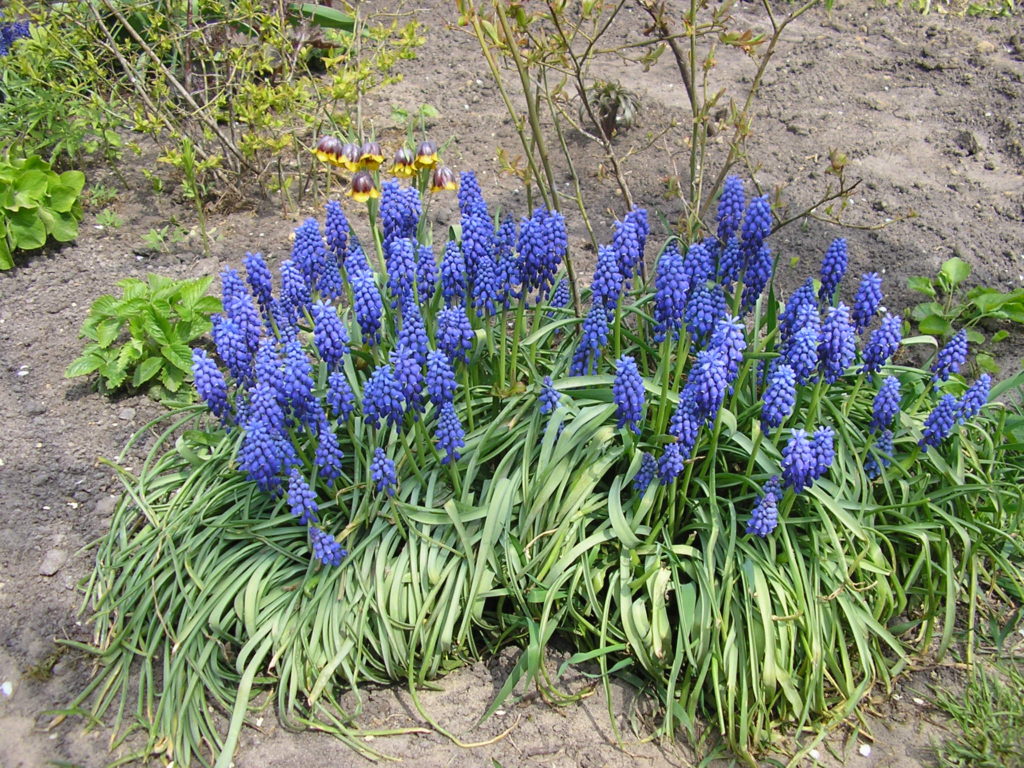
Muscari grindoid.This species is popular in Europe. It has smaller flowers than the Armenian species. Plant height - up to 15 cm. The inflorescence has the shape of a cluster, collected in the brush from small numerous flowers. Unlike Armenian muskari, his inflorescences are white and pink shades. The most beautiful varieties:
- var. Album - Muscari with beautiful white clusters resembling pearls.
- var. Carneum - variety with infloresions of soft pink shades.
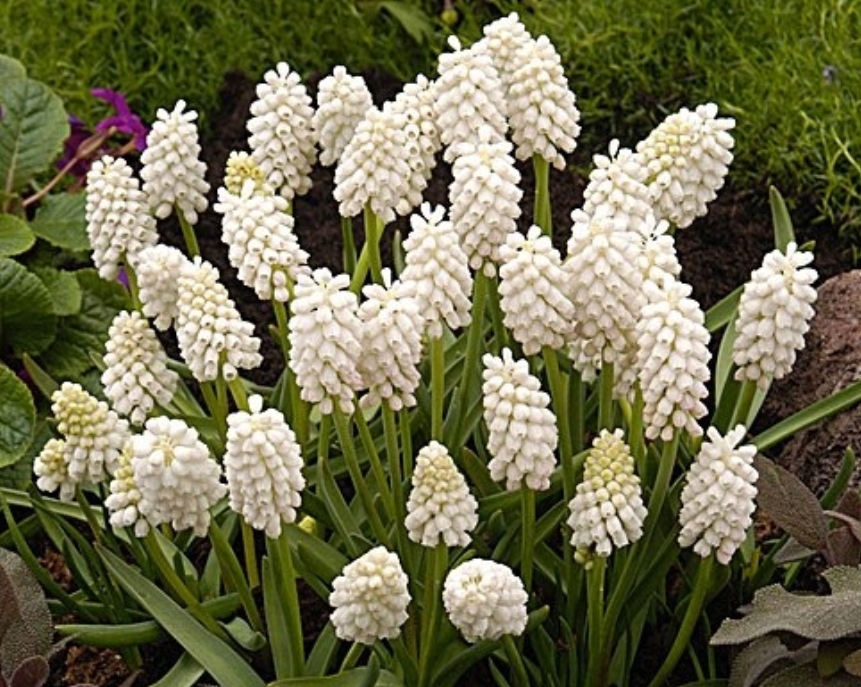
Muscari wide-visual. A distinctive feature of the Muscari of the broad-sized - wide leaves resembling tulip leaves. Inflorescences - dense, cylindrical shape of dark blue shades. Multiple blooms come from one bulweic.
Muscari pale.Plant height up to 30 cm with 2-3 narrow leaves. Flowers with pale blue flowers in the form of small bells. In nature, spreads on mountain slopes. The most famous variety
White Rose beauty - his feature is that the flowers have a pale pink color.
Muscari Khoughty.A beautiful plant with an unusual inflorescence - on the flowers there is a hokcholok from the flowers of purple or lilac shade. The most famous variety:
The plmmaum is a plant with a strong-defector stem, on which numerous sterile flowers of lilac-lilac shades are located.
Muscari Osh, or Tubgen. Muscari with blue and blue inflorescences, exacerbating a sweet scent. The height of the plant is about 25 cm. Heat-loving look, for the winter needs mulching.
Blue Magic - recently derived variety with delicate sky-blue flowers with white hokholk. Incredibly beautiful decorative grade. When trampling from one bulwing can reach 7 color seals. Flowering time - April.
Muscari pretty. Flowers with bright flowers, at the ends - white teeth, inflorescences are dense. Flowering time - early spring.
Muskari landing and care in the open soil
Place for landing
The Muskari plant is unpretentious, can actively grow both in the sun well-lit by the sun and in the shade. The time of his flowering - the early spring, when the branches of most trees and shrubs do not yet have foliage, so you can choose any place for its landing, they will have enough sunlight. Consider that mouse hyacinth - a perennial and will delight with his bloom for several years, plan it in a group with other perennial flowers. Beautifully looks like a group landing of mouse hyacinth in a multi-tiered flower bed in the neighborhood of higher spring flowers: tulips, daffodils, with ripples. It is recommended to plant muskari on the elevated areas of the garden, where water will not be stamped, since excessive humidity may not affect the bulbs and lead to her death. For landing it is better to choose a plot with loose, water permeable and fertile soil. Do not use the landing space with clay soil. Clay holds moisture and in clay soil The plant may not take care. Do not forget that mouse hyacinth is a fragile and miniature flower, which needs to protect against strong gusty winds, so the place of its landing should be protected from the gusts of the wind.
When to plant Muscari in open ground
Landing Muskari is better to exercise in the fall (September-October), before frosts, to give bulbors to root well for the winter. With a decrease in the air temperature of less than 5 degrees, planting Muskari in the fall in the soil is already late. Lukovitsa Muscari buy for landing in flower shops. Choose young bulbs with kids, without spots and damage.
Muscari landing
Before boarding the bulwacks, it is recommended to hold a few days in a cool place at the air temperature not more than 9 degrees to help them adapt to landing into a cold ground. Before planting the bulbs, it is necessary to be disinfected in an average solution of manganese, just soak them for one hour.
Soil, where the bulbs of Muskari will be planted, it is necessary to moisten well during the day, pour into the water, then for each well, you need to make drainage from river sand. Large bulbs are immersed in a soil at 7cm depths at a distance between the bulbs of 5-10 cm, and smaller bulbs need to be planted at a depth of 3 cm, observing the distance of 2-3 cm from each other. For the effect of "naturalness" landing, you can land the bulbs in the wellfulness of the way, like grain. The bulbs will warm in random order and create a decorative effect of growing muskari in a natural environment.
Very small bulbs are recommended to plant in bed. To do this, prepare a trench in a depth of about 8 cm, make it drainage from river sand in it to protect the bulbs from bacteria. Space small bulbs like grain. Pour the land and well.
Muscari care
Musari's life cycle consists of two stages: flowering and rest stage. Each life stage requires certain rules for the care of the plant. In the growing season, the plant is needed by watering and feeding, and during the rest watering ceases. Consider the basic rules for caring for mouse hyacinth:
Podchar
As a feeding, which is carried out in the growing season, you can use a divorced compost or humus. The first feeding is made after the release of young sprouts from the soil to a height of several centimeters, and the second - when buds appear on the stems.
Watering
During the flowering period, Muskari must support the constant humidity of the soil. In the future, after flowering and during the rest, the plant can not be water, it is enough for a natural moisture of spring music and putting snow. Excessive humidity can lead to reinclination of the root. For watering the plants, you should choose the first half of the day, after the rain it is recommended to break the soil.
Caring during flowering
The duration of colorful and fragrant blossoms Muskari about 3 weeks. In no leaving during this period, the plant needs, only to loosen the land after watering, to enrich the soil with oxygen, as well as remove weeds. If spring is sultry and no rain, and there is no regular watering capabilities, it is recommended to mulch the soil of pine bark, dry grass or small gravel to keep the desired moisture flower.
Care after flowering
After flowering, Muskari need to remove the blurred blooms and make feeding to strengthen the bulbs and prepare them for winter. As a feeding after flowering, liquid potash-phosphoric fertilizer is used. As soon as the ground part of the plant bursts, watering behind the plant ceases, the bulb Muskari is in the stage of rest.
Muscari Transplantation
In the fall, the plot or transplantation of the plant is carried out. The bulbs digging up for the winter is not necessary, mouse hyacinth-winter-hardy plant and perfectly tolerates the winter. If the plant is too much in one place, so that the flowers do not interfere with each other's growth, the bulbs dig up and transplant no more than once every 4 years.
During autumn peops, a Muskari transplant is made by separating the Bulk-Children from the Mother Lukovitsa. Babies on one bulweone can be up to 30 pieces. Prepare them for landing and sear from it can be the way that is given above.
Preparation for winter
In addition to the searcation and autumn people, it is necessary to prepare the bulbs by winter by entering into the soil of organic fertilizer - humus, at the rate of 1 m - 5 kg. There is no need to cover the bulbs for the winter.
Muscari reproduction
As a rule, Muskari multiplies by dividing the bulbs-kids from the mother's bulb. They are separated easily. In addition to dividing bulbs, Muskari greatly multiply by self-sowing, but this method of reproduction can lead to uncontrolled growth in the site, especially this negatively affects the beauty of the compositions on the flowers. To avoid the growing flower, after it blooms, the blooms must be cut off, leaving only a few for the aging of seeds that can be used for sowing. It should be borne in mind that the collected seeds are able to give a good germination only during the year, they must be sung in autumn, shallowly immersing in the ground to a depth of 1-2 cm. Already in spring, you can see elegant young thin shoots, which only begins the bookmark process and The formation of the bulbs. Flowering muskari, planted by seeds, will be only in 2-3 years.
How to store bulbs for pastures
Muscari bulbs are used to distilse to admire the beautiful flower in the windowsill. To prepare the bulbs for storing for a distance in the room, it is necessary to choose them to choose and guided by the following rules:
- digging out the luxury for storage indoors is necessary after only when the plants will start drying up the leaves;
- select the largest, healthy and mature bulbs;
- drop the dug bulbs in a dry room for several days, and then put them in a box with peat or with wet pure sand;
- every week inspect the bulbs, removing from the sand by reworked, soft or damaged;
- in the room where the bulbs of the mouse hyacinth will be stored should be the temperature of 15-17 degrees, and the humidity is about 70%.
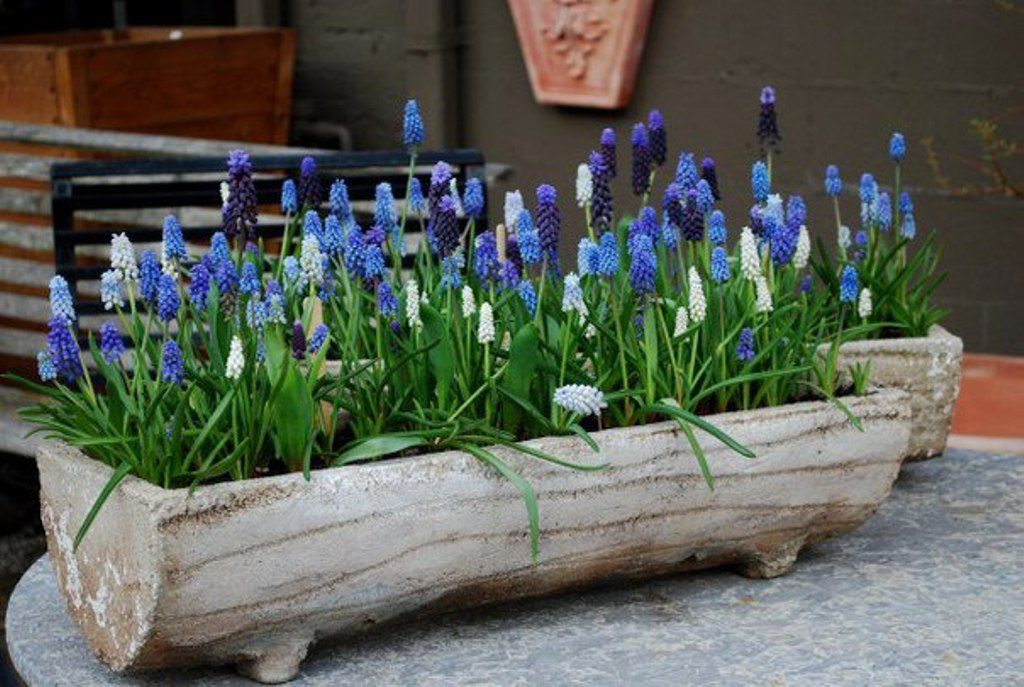
Already before planting a pot, the bulbs must be transferred to the room with an air temperature of 9 degrees, wrap with paper and keep them there for a month. Then, the storage temperature must be reduced to 5 degrees, for this purpose, the bulbs are transferred to the refrigerator to the department for vegetables, here they must be 3-4 months. After cold content, the bulbs are planted into the prepared pots, at the bottom of which you need to make drainage from pebbles or clay. Soil for planting in pots Choose a nutritious and loose, in front of the landing to moisten it. The depth of planting bulbies - 2 cm, the upper part of the bulbs do not need to be soil. Capacities with bulbs of mouse hyacinth must be at a temperature of 10 degrees, after 2 days it is raised to + 15 ° C and transferred to the room. Flowering mouse hyacinth will be in 15 days, and the duration of its flowering is about 20 days.
Muskari pests and diseases
Muscari are subject to the following diseases:
- Mosaic on the leaves - a viral disease transmitted to the tooth.
The first sign of the mosaic is the dwarfship of the plant, its leaves look narrowed and deformed. The disease transfers the TLL, which infects a healthy bulb. If the bulb infection has already happened, it needs to dig and burn so as not to infect with a virus other healthy copies. The virus disease is not subject to treatment, it can only be warned, that is, to fight with mosaic carriers - tool. A solution consisting of 2 teaspoons of liquid soap and 2 glasses of water is used to destroy the threshold. Spray the plant with this solution. - Cute tick. Muskari is sometimes amazed by a web tong. To combat it, these drugs are used as an actor, phytodeterm. When processing the plant, these drugs must clearly comply with the instructions.
- Damage to slugs. If you find that the leaves of the plant in some places are left and they are observed by the remnants of mucus, the plant was attacked by mucus. The reason for the appearance of the slug is excessive humidity.
Muscari - Spring Garden Decoration
Bright and touching gentle muscari is able to create a romantic, spring mood in the garden, especially it looks spectacular with other blooming flowers, having filled them with dark blue, blue paints. The bright, colorful carpet of Muskari in the blue tones, it looks especially impressive in the neighborhood with tulips and daffodils, crocuses and hyacinths, decorate clubs, incredibly beautifully looks along the garden tracks. 
Given the duration of flowering of different varieties, you can land a variety on the flowering, which will bloom each other, ensuring the beauty of the flower beds throughout the spring. Muskari in the flowerbed perfectly coexist with violets, begonias, margaritas, petunias, field cloves and daisies, these flowers will help hide their withering, since after flowering Muskari loses attractiveness. Also beautifully looks like group landings Muscari under decorative shrubs or trees, on the Alpine slides and flower beds, near small water bodies in the compositions where wild stones are present.
Muskari in the garden is not difficult and completely easy, its colorful bloom will delight the eye, filling the spring garden with a gentle pleasant aroma for many years.
Muscaria photos

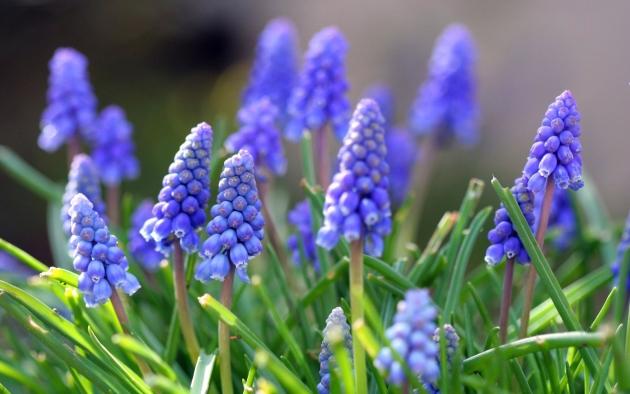


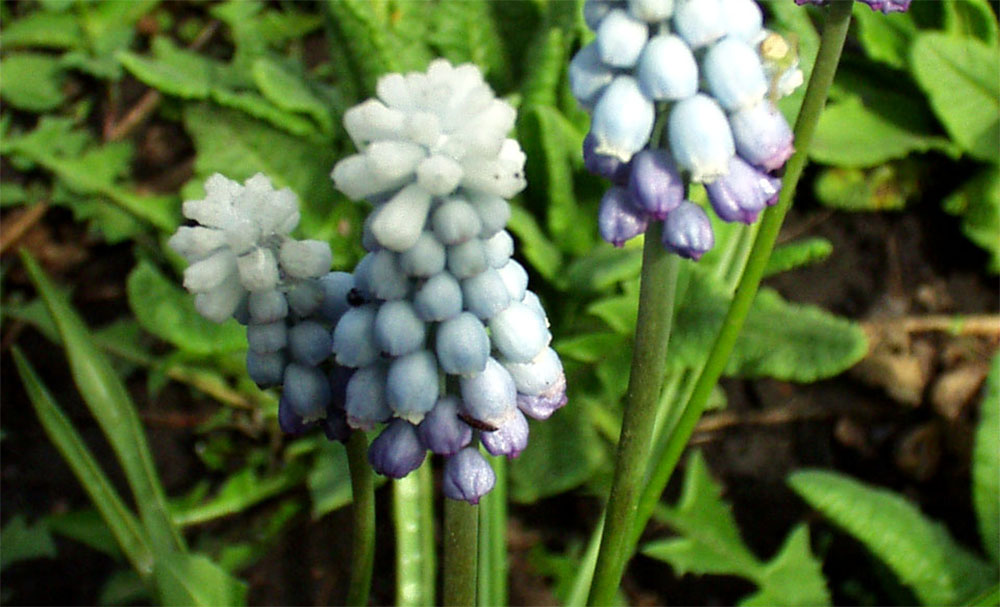
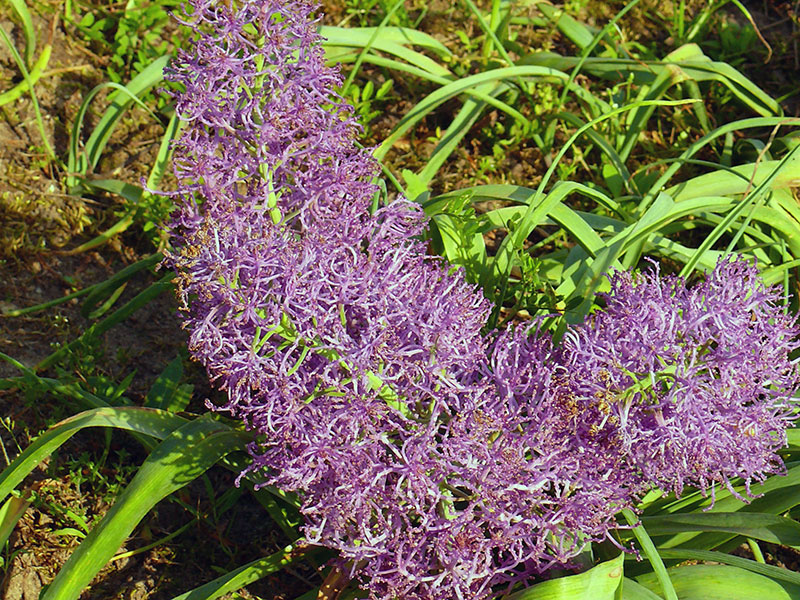
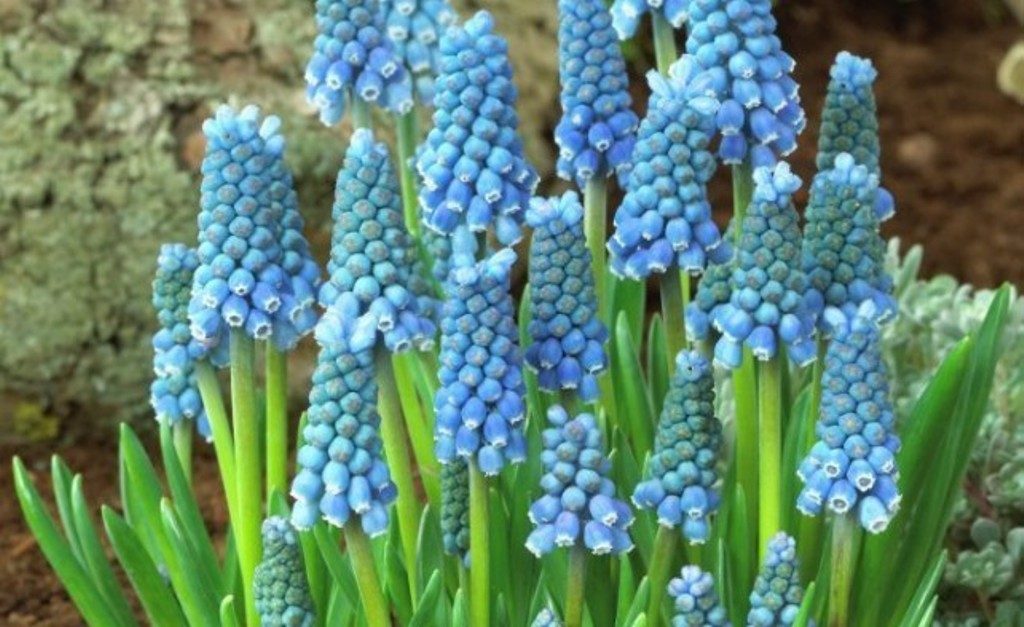
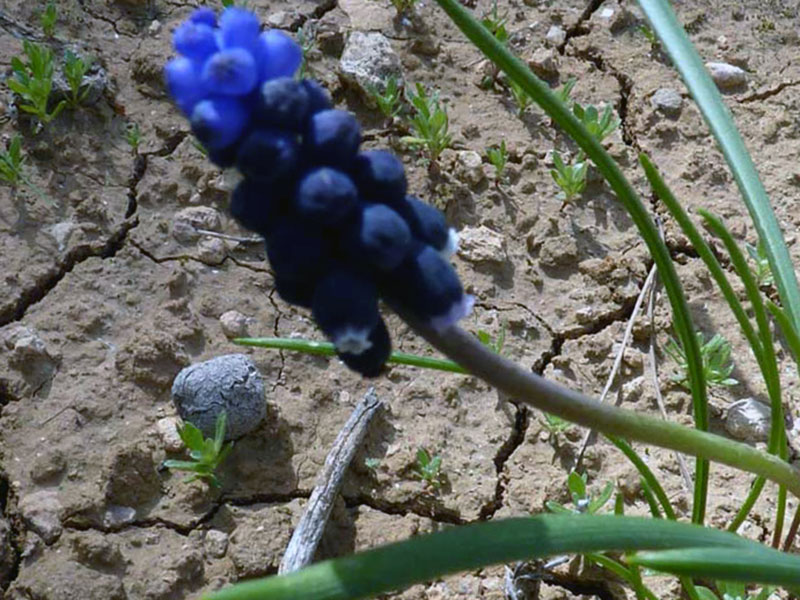
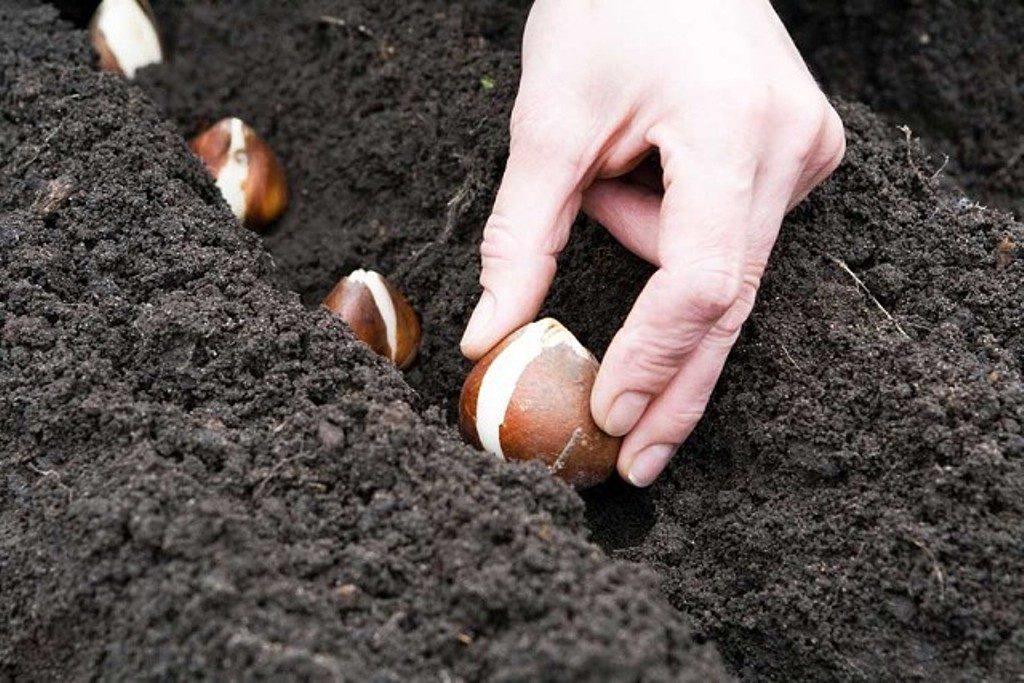
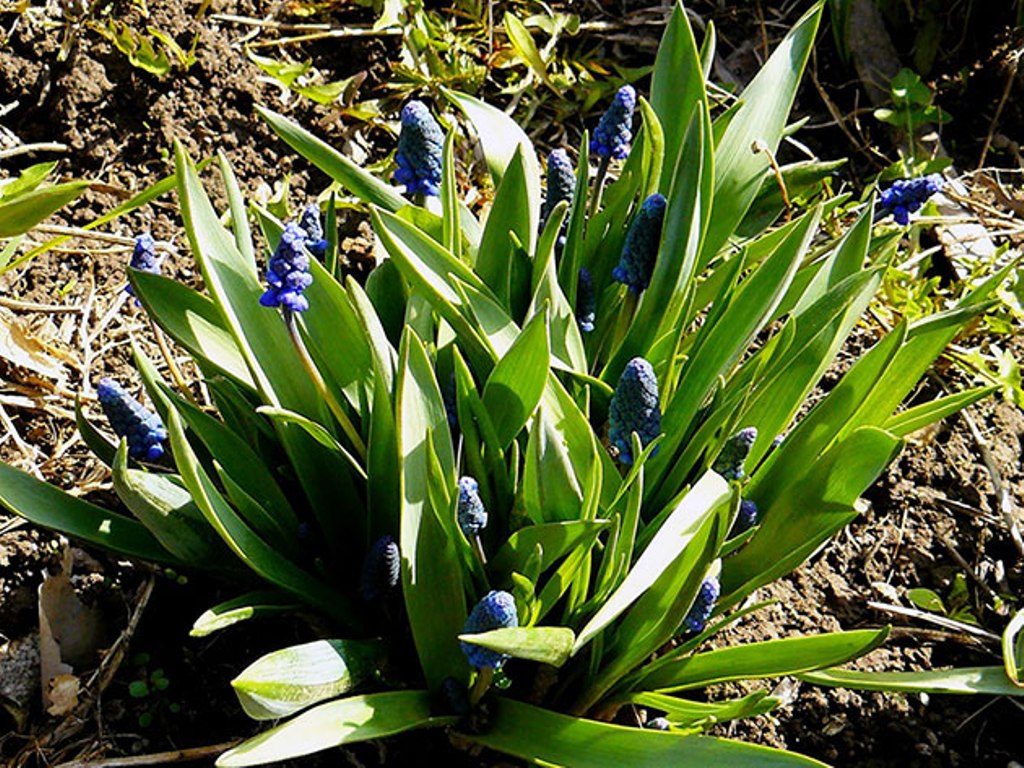
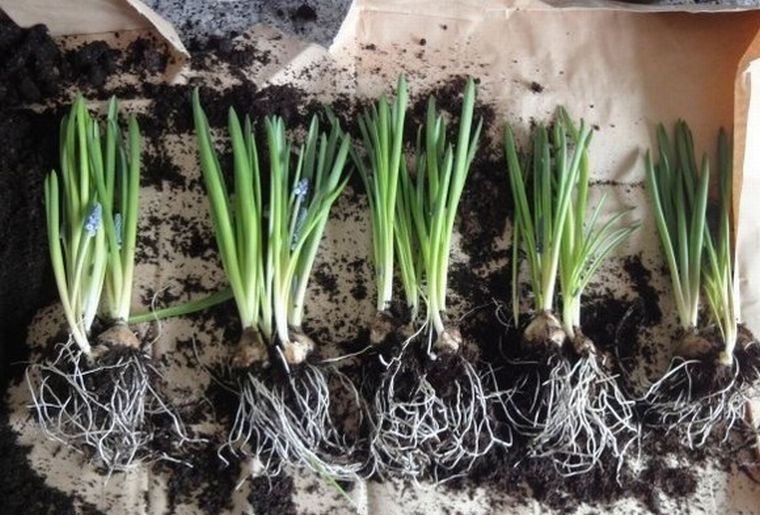
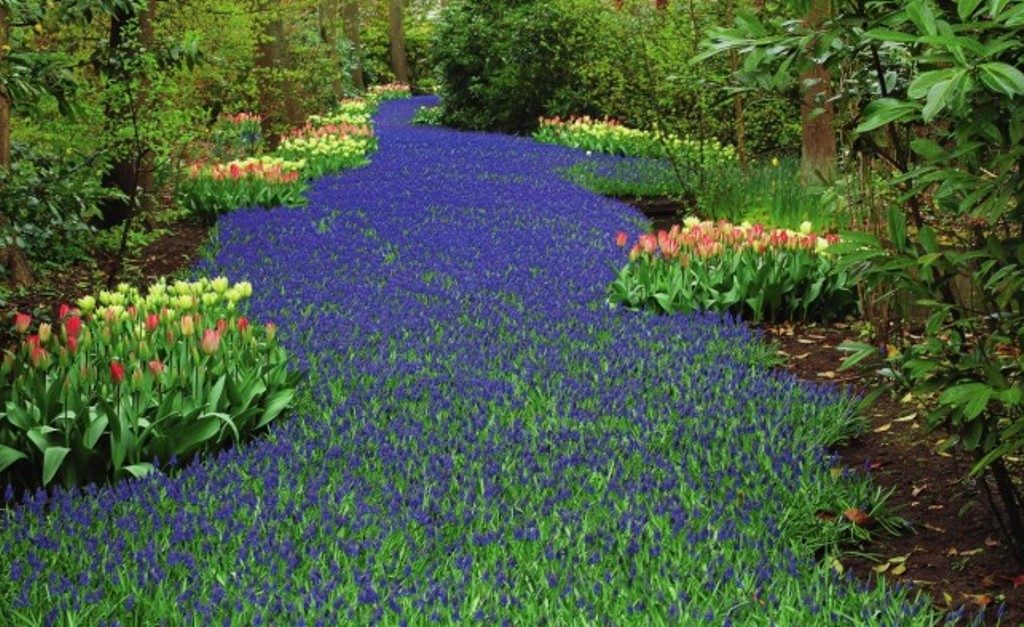
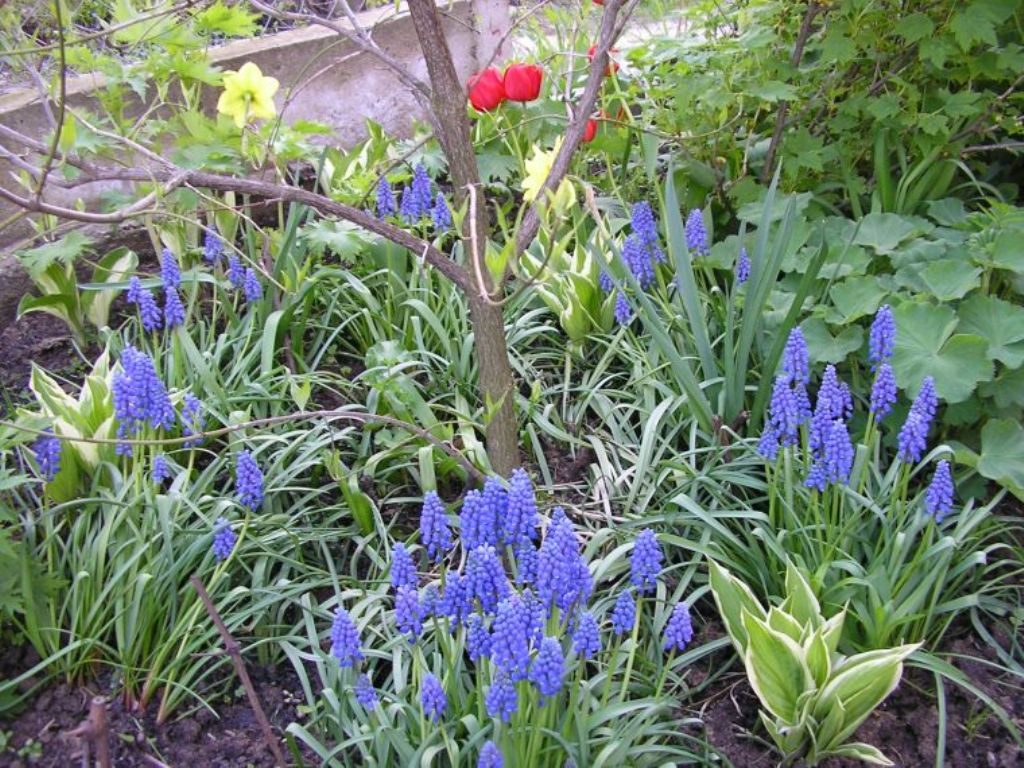
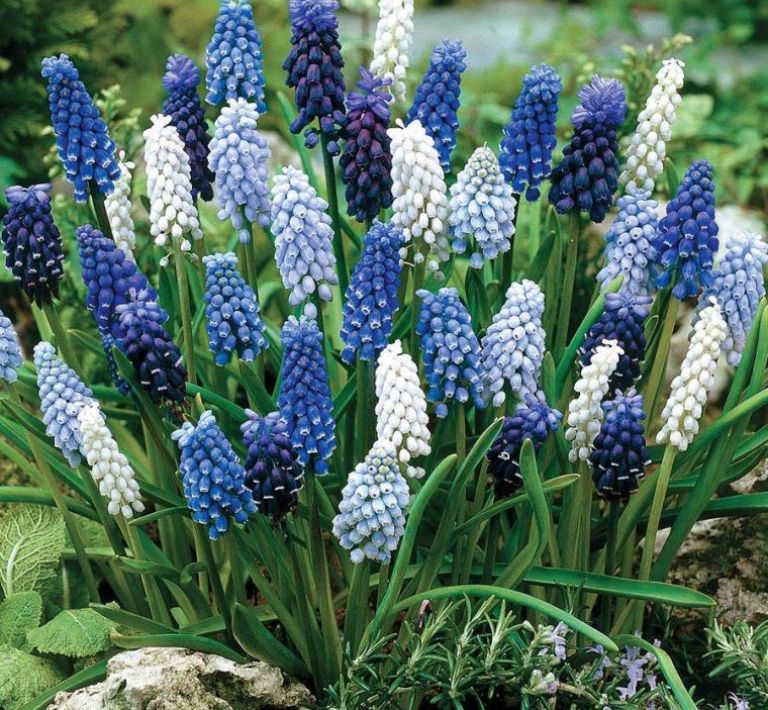
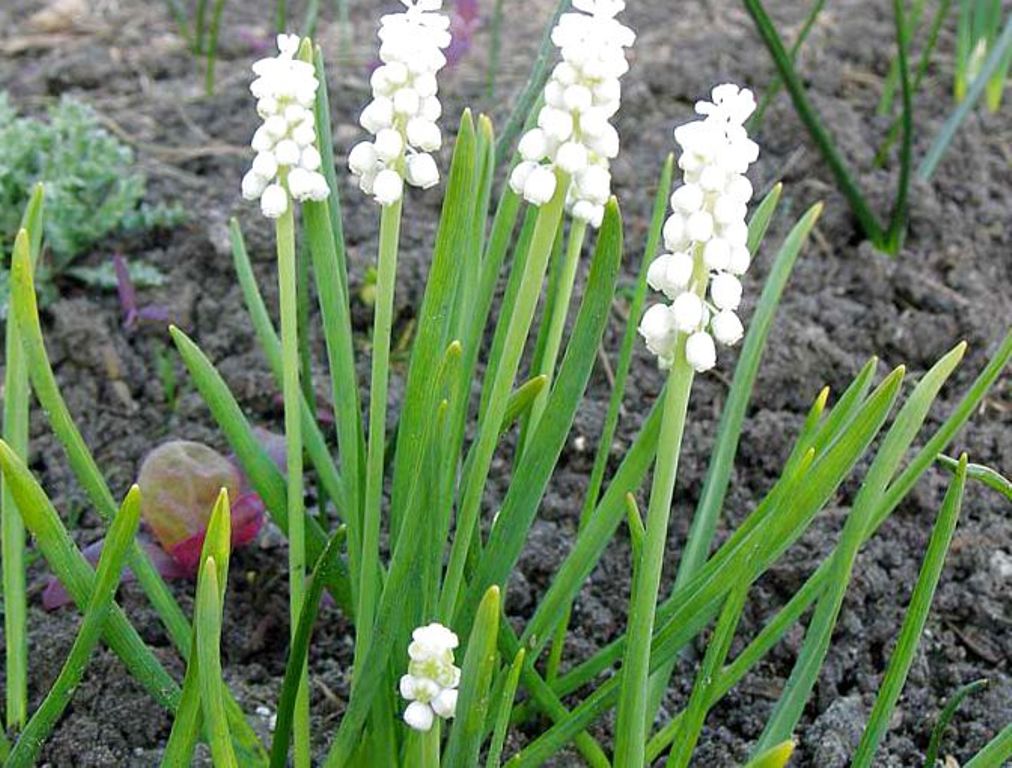
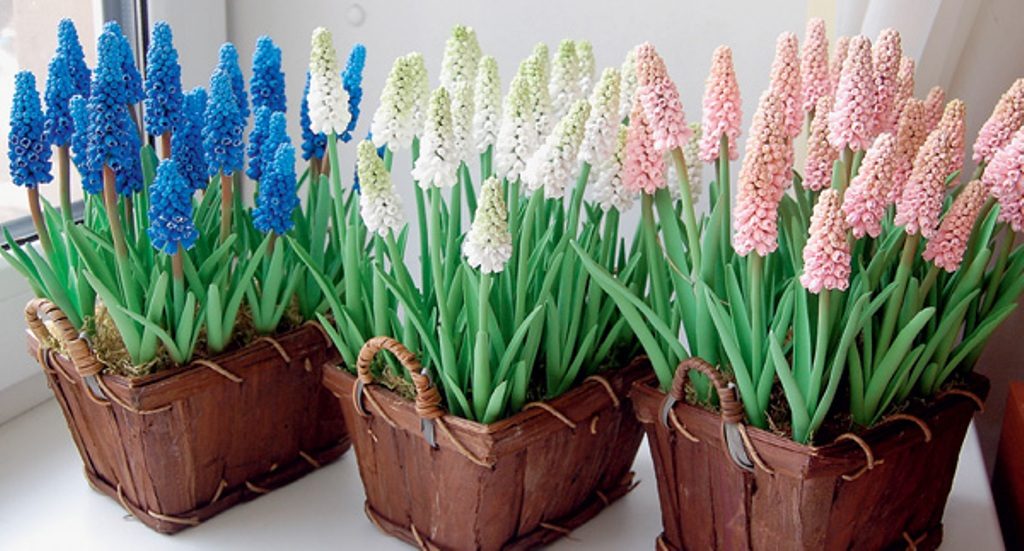













 Start a discussion ...
Start a discussion ...